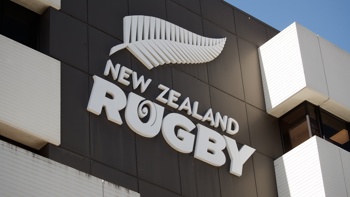
New Consumers Price Index data shows the inflation rate has continued to fall.
New Zealand’s consumers price index increased 4 per cent in the 12 months to the March 2024 quarter, according to figures released by Stats NZ today.
The 4 per cent increase follows a 4.7 per cent increase in the 12 months to the December 2023 quarter.
”Price increases this quarter are the smallest since June 2021. However, they remain above the Reserve Bank of New Zealand’s target range of 1 to 3 per cent,” Consumer Prices senior manager Nicola Growden said.
The annual rate was broadly in line with the consensus of economist forecasts.
The Reserve Bank had forecast 3.8 per cent in February but partial data since then had most local economists picking a higher rate.
Westpac economists had expected that New Zealand consumer prices rose 0.8 per cent in the March quarter, with the annual inflation rate dropping to 4.2 per cent.
KiwiBank had also pencilled in 4.2 per cent. ASB had 4.1 per cent and ANZ 4 per cent.
BNZ economists were the most optimistic, picking 3.9 per cent, after a late run of fairly grim data last week.
“The result was a little below our forecast,” said Westpac senior economist Satish Ranchhod. “[But] the devil was in the detail.”
Housing and household utilities were the largest contributors to the annual inflation rate, Stats NZ said.
This was due to rising prices for rent, construction of new houses, and rates.
Rent prices increased 4.7 per cent in the 12 months to the March 2024 quarter, while construction of new houses and rates increased 3.3 per cent and 9.8 per cent, respectively.
“Rent prices are increasing at the highest rate since the series was introduced in September 1999,” Growden said.
Food prices fell in March, compared to February, led by a steep fall in the price of fruit and vegetables.
On an annual basis, a record 13.8 per cent fall for fruit and vegetables helped keep the inflation figure for all food at 0.7 per cent.
The next largest contributor to the annual increase was recreation and culture, due to rising prices for international accommodation, and cultural services (which includes items like subscription TV, cinema tickets, and zoo admission).
Prices for international accommodation increased 20.8 per cent in the 12 months to the March 2024 quarter, following a 6.0 per cent increase in the 12 months to the December 2023 quarter.
Cultural services increased 9.7 per cent in the 12 months to the March 2024 quarter, following a 6.6 per cent increase in the 12 months to the December 2023 quarter.
Alcoholic beverages and tobacco were the next largest contributors, driven by rising prices for cigarettes tobacco, and beer.
Quarterly figures
The consumer price index rose 0.6 per cent in the March 2024 quarter, due to rising prices for alcoholic beverages and tobacco, and recreation and culture, partly offset by lower transport prices.
Cigarette and tobacco prices rose 6.5 per cent in the March 2024 quarter. The annual tobacco excise tax increase occurred on 1 January 2024.
“The average price of a pack of 25 cigarettes was $54.27 in March 2024,” Growden said.
“One cigarette now costs about $2.17, while 10 years ago they cost 93 cents each.”
Tradeable and non-tradeable inflation
Non-tradeable inflation was 5.8 per cent in the 12 months to the March 2024 quarter (compared with 5.9 per cent in the 12 months to the December 2023 quarter), driven by rent, construction of new houses, and cigarettes and tobacco.
Non-tradeable inflation measures final goods and services that do not face foreign competition and is an indicator of domestic demand and supply conditions. However, the inputs of these goods and services can be influenced by foreign competition.
Tradeable inflation was 1.6 per cent in the 12 months to the March 2024 quarter (compared with 3.0 per cent in the 12 months to the December 2023 quarter), driven by higher petrol and international accommodation prices. This was partly offset by lower prices for international air transport and vegetables.
Tradeable inflation measures final goods and services that are influenced by foreign markets.
“The softness in today’s result was entirely due to lower tradable prices, with falls for items like used cars and apparel. That saw tradable prices falling 0.7 per cent over the quarter, with annual tradable inflation falling from 3 per cent at the end of 2023 to 1.6 per cent now,” said Westpac’s Ranchhod.
“In contrast, non-tradable inflation was hotter than we or the RBNZ had expected.”
Non-tradable prices were up 1.6 per cent over the quarter and on an annual basis, non-tradable inflation remained elevated at 5.8 per cent.
“Notably, non-tradable excluding construction costs remain elevated at 6.3 per cent and have eased only slightly since the RBNZ first raised the OCR back in 2021.
This story was originally published on the NZ Herald here.
Take your Radio, Podcasts and Music with you









